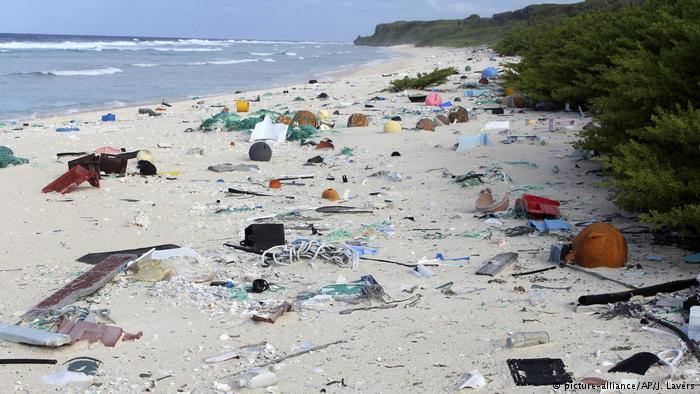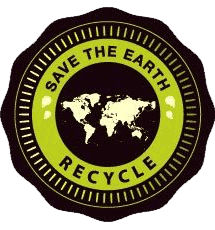The world’s plastic trash problem continues to get worse. Fortunately, people worldwide are beginning to recognize the problem and attempt to solve it. One of those people is waste engineer Jemma Jambeck of the University of Georgia, who was recently profiled by NPR.
Plastic waste has been in the news throughout the year. With municipalities around the world banning plastic straws, a growing number of people are becoming aware of the severity of the issue.
You’ve probably heard about the huge floating gyre of plastic waste in the Pacific Ocean. That gyre, understandably, has only become worse over the years. As NPR explains:
“When a huge floating gyre of plastic waste was discovered in the Pacific in the late 1980s, people were shocked. When whales died and washed ashore with stomachs full of plastic, people were horrified. When photographs of beaches under knee-deep carpets of plastic trash were published, people were disgusted.”
One of the craziest things about the plastic trash gyre in the Pacific is that for a long time, nobody really knew where it was coming from.
Many assumed some of the trash had come from ships crossing the Pacific. Others assumed at least some of the trash had drifted over from the land.
It wasn’t until 2015, however, when one environmental engineer started doing the math. In 2015, University of Georgia environmental engineer Jenna Jambeck completed a groundbreaking study suggesting there were hundreds – even thousands – of times as much plastic washing into the sea compared to what we saw in the ocean gyres.
In other words, the ocean gyres were just the tip of the iceberg. The gyres were the most visible sign that plastic waste was becoming a serious problem for the world’s oceans. It wasn’t until recently that we discovered the true extent of that problem.
In her NPR interview, Jambeck recommended listeners go through a unique challenge:
“So what we’re going to do fort he next 24 hours is to record everything that you touch that is plastic,” said Jambeck in the interview.

A surprising number of things we interact with on a daily basis are made of plastic – from the plastic grip on a microphone to the plastic ID card around your neck. From plastic keyboards to plastic coffee makers to plastic water bottles, it doesn’t take long to realize that much of your world revolves around plastic.
Jambeck Began Her Career as a Solid Waste Management Engineer
To tackle the plastic waste problem, Jambeck is using her experience as a solid waste management engineer. Described as “a connoisseur of trash” in the NPR writeup, Jambeck has always had a passion for studying waste and watste management solutions:
“Her interest in trash started when she was growing up in rural Minnesota, Jambeck says. There was no garbage collection in her area, so she’d borrow a truck to take her family’s trash to the dump every week. ‘I was always pretty fascinated by going there and just seeing what I would see,” she remembers. “I fell in love with studying waste.’” Trash Removal
Plastic Doesn’t Break Down
Landfills are powered by more science than many people realize. A landfill is like a living, breathing thing.
The landfill is an ecosystem where microbes break down organic garbage into its constituent chemicals. Metal corrodes and dissolves. The materials we use everyday eventually return to the earth.
Plastic, unfortunately, is the one exception. As we’ve realized, that’s quickly becoming a huge problem.
Over time, plastic will break down into smaller pieces. Those smaller pieces, however, will survive in the environment for an indeterminate length of time.
How Do We Solve the Plastic Problem in the World’s Oceans?
When the plastic gyres in the Pacific Ocean were first discovered, most people had a natural response to it: they wanted to clean it up as quickly as possible.
Lambeck, however, realized the gyres were a symptom of a bigger problem. She realized that we needed to find out where the plastic was coming from, then take steps to stop that plastic at its source.
In a paper published in Science in 2015, Lambeck revealed crucial findings about plastic management. The study showed that China, Indonesia, the Philippines, and Vietnam are the leading sources of plastic waste in oceans (based on waste management by coastal populations). China accounts for 27.7% of global mismanaged plastic waste, for example, while the Philippines accounts for 5.95% of mismanaged plastic waste.
The United States, meanwhile, produces much more plastic waste per person than these other countries, but a comparatively small amount is mismanaged. Coastal populations in the United States – a population totaling 112.9 million – generated just 0.9% of global mismanaged plastic waste.
The next step, of course, is to emphasize better plastic waste management among coastal populations worldwide – particularly in China, Vietnam, the Philippines, and Indonesia.
For effective waste management in southeastern Pennsylvania, order a roll-away dumpster from Eagle Dumpster Rental today. Our environmentally-responsible waste management teams ensure your waste is responsibly disposed of. Dumpster Rental Northampton County
